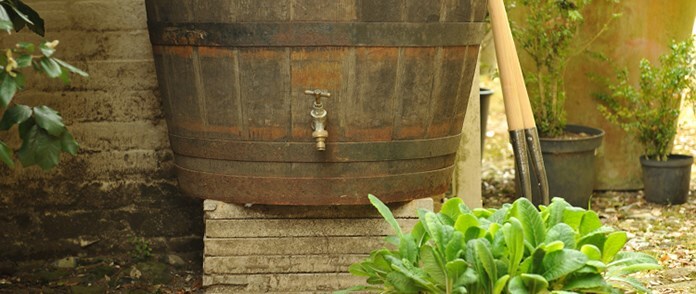Monthly musings: June
Drought-proof displays

You don’t need a hot, dry, sunny, Mediterranean-style summer to have a drought. As we’ve all discovered, it can happen even in an ‘ordinary’ sort of year, when the cumulative effects of several dryish winters result in hosepipe bans, even though there seems to be plenty of rain. So it pays to think water-wise when creating container displays.
Traditional drought-busters, such as gazanias, lampranthus and osteospermums won’t make much of a show in a dullish summer since the flowers only open in bright sunlight. Even pelargoniums are a tad iffy as their petals go mouldy in conditions that are constantly overcast, and somehow they don’t put their heart into flowering. Luckily there’s a very viable alternative. Succulents.
Now I know that as indoor plants, cacti and their ilk are distinctly old hat, but some of the showier succulents are very good grown outdoors in summer tubs and troughs or windowboxes, and they’re an emerging new trend - good garden centres and nurseries usually stock a selection. Oh, they certainly like strong sunlight and if summer suddenly takes a turn for the hotter and brighter, they’ll be perfectly able to cope thanks to their plump water-storing shapes and waxy skins. But since they are mostly grown for their shapes and textures they’ll still look good even in an ‘iffy’ summer.
Echeverias are stunning, with squat, pointy-rosette shaped bodies and waxy waterproof finishes all tinged in fetching blue, pink, maroon, purple or grey, depending on the variety. Being so symmetrically shaped, each plant looks rather like a flower in its own right, but they’ll often produce short flower spikes topped with small magic-lantern-like bells, usually in a cheery orangey shade. A single plant looks stunning in the centre of an eye-catching container, and due to their rather abstract modern looks, echeverias suit high-tech shiny metal just as well as the more traditional terracotta. Alternatively, plant a row of three or five along the centre of a trough, or dot them in and around a hanging-basket, or perhaps try a collection in a traditional strawberry planter, with one rosette per pocket. The result looks stylish, and very different.
If you fancy more of a mixed succulent-style planting scheme, echeverias team up nicely with sempervivums (houseleeks) which form much the same shapes but with far smaller bodies that pile up to make knobbly, spiky looking mounds. Or use any of the indoor or outdoor sedums. They’ll look good together and they all need the same summer conditions; an open situation that gets all the sun there is, and very free-draining compost. Use a bag of ready-mixed cactus compost, or make your own by blending one-third each of peat-free multipurpose, John Innes No.2 and potting grit.
Echeverias aren’t hardy, so come late September you’ll need to bring them indoors for the winter, if you intend keeping them for next year. But they are also very easy to propagate, which you can do at any time now. Simply detach a few whole, healthy-looking leaves from somewhere it won’t leave a gap and spoil the looks of the plant, and press the wounded-end down into a pot of sand. It’ll soon take root and produce one or more new plants.
Why not take the plunge and grow your own potted desert garden patio feature?
You’ll really cut down your water consumption, watering and worry this season....whatever the weather.
